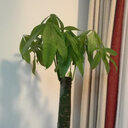Identification of a novel NOG mutation in a Chinese family with proximal symphalangism.
Кључне речи
Апстрактан
Proximal symphalangism (SYM1) is an autosomal dominant disorder, mainly characterized by variable fusion of the proximal interphalangeal joints of the hands and feet. To date, two genes, GDF5 and NOG, have been reported to associate with SYM1. Herein, we clinically characterized a Chinese family with fusions of the bilateral proximal interphalangeal joints in the 2-5 digits without conductive hearing loss. Direct DNA sequencing of the two genes revealed a novel heterozygous missense mutation (c.499C>T, p.R167C) in the NOG gene. This mutation co-segregates with the phenotype in the family and is not present in the 200 control individuals. The c.499C>T mutation is predicted to change the conserved amino acid arginine at codon 167 to cysteine at the protein level. A different mutation in the same codon (R167G) has been described to cause brachydactyly type B2 (BDB2). Our work indicates that the c.499C>T (R167C) mutation is likely to represent the pathogenic mutation in the family. This finding broadens the spectrum of NOG mutations associated with SYM1 and will help to provide genetic counseling to the affected family.




